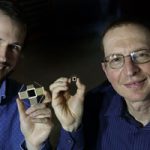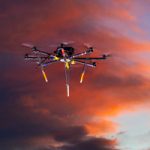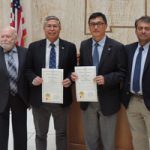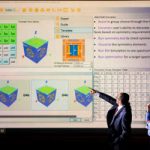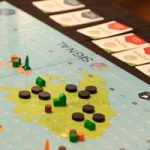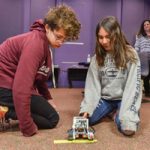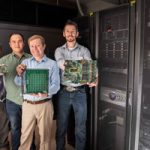Kyle Fuerschbach earns 2019 Kevin P. Thompson Optical Design Innovator Award
Sandia engineer Kyle Fuerschbach has been named the 2019 Kevin P. Thompson Optical Design Innovator Award recipient by the Optical Society. The award recognizes significant early-career contributions to lens design, optical engineering or metrology.
A day in the life of Sandia — 70 years and counting
To mark the 70th anniversary of President Truman’s letter that inspired Sandia to “… exceptional service,” Lab News photographer Randy Montoya spent a full day chronicling the people and work that make the Labs hum from sun up to sundown.
Heroux is SIAM fellow
Michael Heroux, senior scientist at Sandia’s Center for Computing Research, has been selected as a fellow of the Society for Industrial and Applied Mathematics. The SIAM Fellows Program honored Mike for research, leadership and building community in software and algorithms for scientific and high-performance computing.
Breakthroughs in neuromorphic computing demonstrate high efficiency, performance
Sandia researchers and collaborators at Stanford University and the University of Massachusetts, Amherst, recently have made breakthroughs in neuromorphic computing, which mimics the way the human brain carries out data-centric tasks.
Future hypersonics could be artificially intelligent
A test launch for a hypersonic weapon — a long-range missile that flies a mile per second and faster — takes weeks of planning, and it's uncertain how useful test systems will be against urgent, mobile or evolving threats. But Sandia's hypersonics developers think artificial intelligence and autonomy could slash these weeks to minutes for deployed systems.
NM Legislature honors Sandia serial innovators
Stan Atcitty and Hongyou Fan have received recognition from the New Mexico Legislature for their distinguished achievements as serial innovators.
Mirage software automates design of optical metamaterials
Sandia software developers have created the first inverse-design software for optical metamaterials. The new software lets users design science-fiction-like materials with the same efficiency that architects use when they draft building plans.
CALLING GAMERS: Future nuclear security experts train with Sandia-designed game
The next generation of nuclear security experts is being trained in an exciting new way — by playing a first-of-its-kind war game Sandia helped design. The game, Signal, which goes online this spring after its launch as a board game last year, offers players a chance to make strategic decisions using modern political, economic and military tools.
‘MANOS’ needs a hand
Many of us can thank a teacher or mentor who early in our lives ignited in us a passion for our current professions. Sandia’s Manos — or “hands-on” — program is looking for the next generation of Sandia volunteer mentors to provide that spark for science, technology, engineering and math in local middle school students.
Sandia spiking tool improves artificially intelligent devices
Whetstone, a software tool that sharpens the output of artificial neurons, has enabled neural computer networks to process information up to a hundred times more efficiently than the current industry standard. The software, created by Sandia neuroscientists, greatly reduces the amount of circuitry needed to perform autonomous tasks and is expected to increase the penetration of artificial intelligence into numerous markets.



